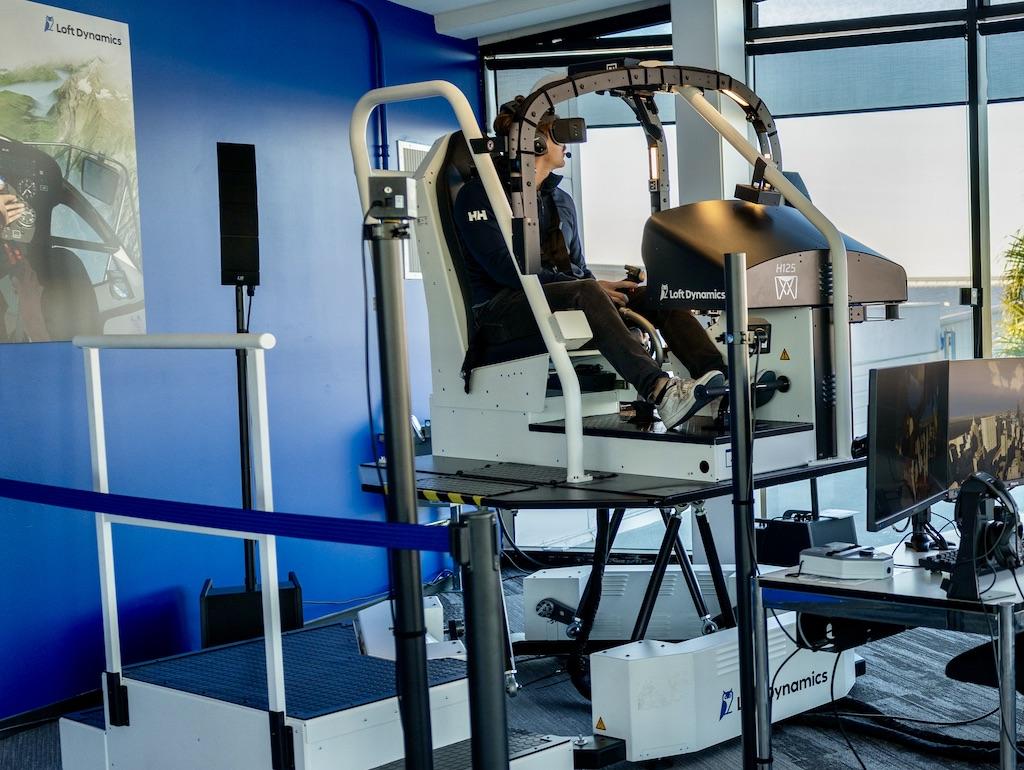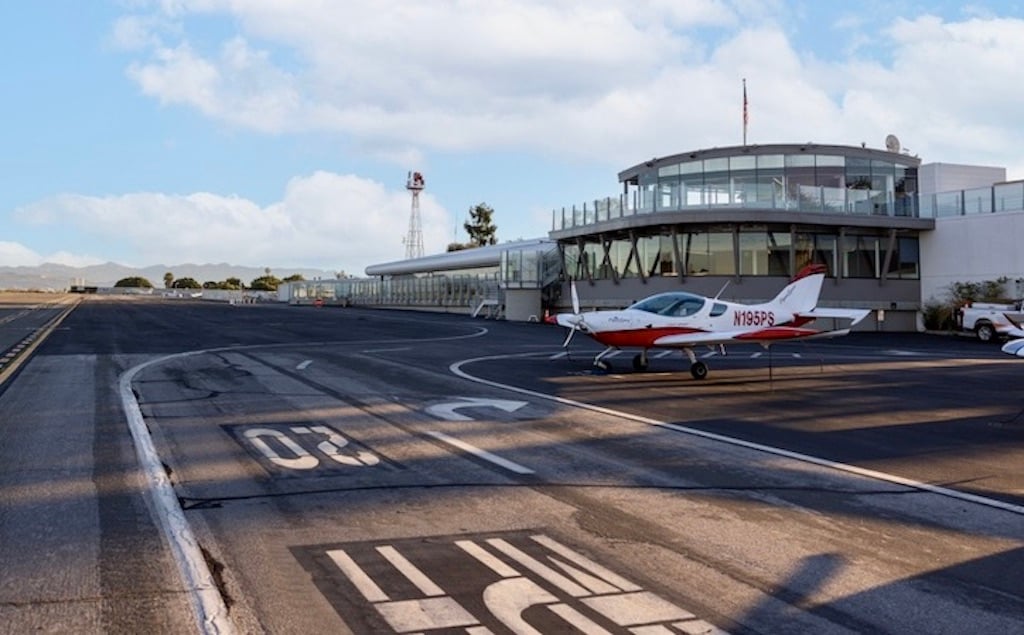Virtual Reality Simulator Provides Realistic Training Scenarios, Part 3

Loft Dynamics’ immersive Virtual Reality Flight Training Simulator devices are one-twentieth the cost and one-tenth the size of traditional full-motion simulators.
The Loft Flight Simulation Training Device (FSTD) allows pilots to practice routine, abnormal and emergency procedures efficiently, especially the critical maneuvers of autorotations and instrument flying. No time is squandered on fueling, warm-ups, and flight time in transit to training areas, which also reduces the cost of training.
The option to reposition also saves valuable training time and cost. This is especially important to the Los Angeles Police Department (LAPD) Air Support Division because it requires quarterly recurrent training for its pilots as well as operating its own flight school with a 44-week training footprint for initial training.
Repetitive practice of these difficult maneuvers equates to instilling muscle memory and reflexes. Trainees can repeat maneuvers like autorotations without the interruption of fitting into the traffic pattern flow, or interrupting others in the traffic pattern. This reduces air traffic in busy traffic patterns, and minimizes the mid-air collision risk in the already congested airspace above the Los Angeles Basin.
Furthermore, as highlighted by the NTSB investigation of the fatal helicopter emergency medical services crash of a Eurocopter AS350B2 near Mosby, Missouri, on Aug. 26, 2011, there is a need for pilots to be exposed to engine failures in a wide spectrum of flight conditions, to include with tailwinds, at cruise speeds, and from relatively low altitude/low airspeed conditions.
The FSTD allows LAPD pilots to train for emergency situations in a safe and highly realistic environment, often not possible to perform in an actual aircraft, while saving money for training and training to a higher proficiency. Additionally, both the initial and recurrent trainees will avoid scheduling interruptions in training due to inclement weather, airspace restrictions, or broken rotorcraft. Nor would a student experience training disruptions due to other aircraft in the congested flight patterns of the airports in the LA Basin. A student can train for day or night conditions, regardless of the lighting outdoors.
Furthermore, the LAPD will be able to directly integrate tactical flight officers (TFO) into the training scenarios. A pilot sitting in the FSTD will look over and “see” the TFO sitting in the other crew seat.
In actuality, the TFO will be sitting at an operator station conducting TFO duties and able to use the three visual screens at the FSTD operator station to see exactly what the pilot is looking at while also being able to see the external environment. The visual realism can create a response incident such as multiple police units setting up a vehicle intercept at a traffic intersection to catch a suspect.
Flight Simulation Hub Opens

Concurrent with the announcement of a VR simulator purchase by the LAPD was the opening of Loft Dynamics’ Virtual Reality Flight Simulation Hub and the company’s North American headquarters at Santa Monica Municipal Airport (SMO). The opening ceremony highlighted a Loft-owned Airbus H125 Virtual Reality FSTD.
“Our SMO location offers convenient access to a high concentration of pilots and enhances on-site and remote support for our North American customers,” says Fabi Riesen, Loft Dynamics founder and CEO.
Since the beginning of rotary-wing aviation there has been the overwhelming need for effective training in a low-risk medium. In May 2022, after walking out of Loft Dynamics’ facility in Zürich, I recalled the lack of training for those in the aerial firefighting industry. It too has immense environmental and mission challenges, and simply stated, the real world around a wildfire incident is unforgiving.
Once again this leads me to a question I have posed several times: “How do we prepare pilots for mechanical malfunction, external load operations, mountain operations and other high-risk operations without causing so many flight accidents?”
A similar concern pertains to the entire helicopter industry. How do we provide sufficient training to make certain pilots are proficient in complex emergency procedures such as autorotations under a variety of real-world conditions?
The NTSB Safety Alert, “Safety Through Helicopter Simulators,” provides a clear recommendation. “Consistent, standardized simulator training will help prepare pilots for the unexpected and will decrease the risk of an accident,” the safety board says. “Simulators can be a helpful tool for operators to provide pilot training on autorotations during any phase of flight, which reinforces the immediate responses required during actual emergencies.”
The Virtual Reality FSTD provides the opportunity for risk-free practice of these maneuvers under realistic conditions, to include variations in helicopter weight, density altitude, wind speed and direction, as well as during the full spectrum of flight phases.
While this author excitedly monitors developments with the LAPD and Loft Dynamics, I offer another thought. Those who fly into smoke-filled canyons with erratic gusting winds and super-heated columns of air and all of the other high-risk public safety missions also deserve to have frequent effective training in the most realistic environment possible.
Training officers with the LAPD Air Support Division and engineers at Loft Dynamics are focused on taking full advantage of this emerging technology. Will it be interesting to watch the evolution of training with virtual reality? The answer is an unqualified “yes.”
Virtual Reality Simulator Provides Realistic Training Scenarios, Part 1: https://aviationweek.com/business-aviation/safety-ops-regulation/virtua…
Virtual Reality Simulator Provides Realistic Training Scenarios, Part 2: https://aviationweek.com/business-aviation/safety-ops-regulation/virtua…





